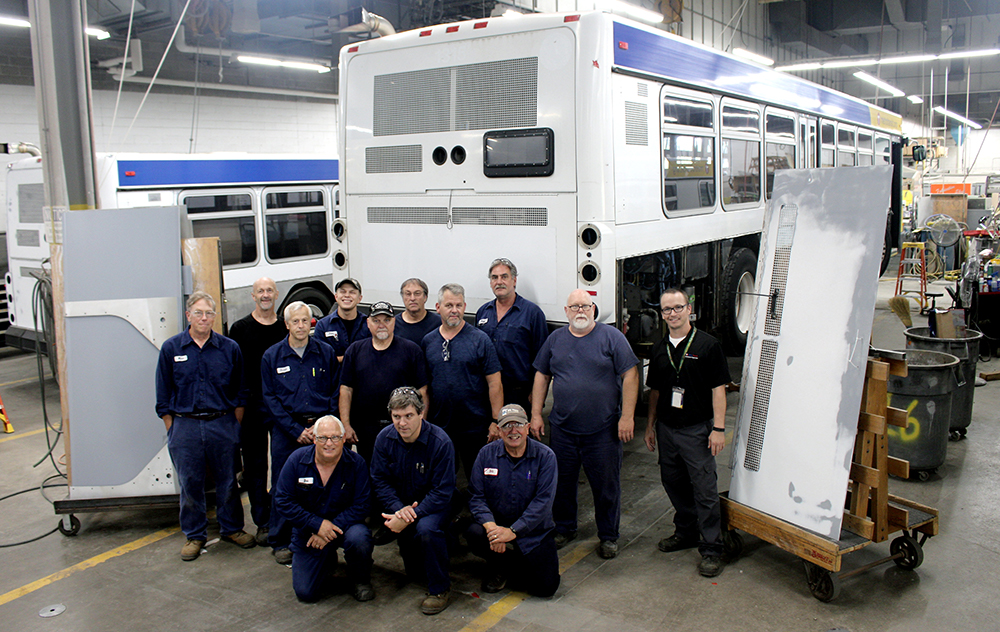
The Overhaul Base team, from Left to Right: Back Row, Ken Hislop, Jake Widgren, Bob Henrich, Paul Swanson. Middle Row: Mark Bohlke, David Pizza, Steve Book, Jim Biesemeier, Marty Hauge, Anthony Zessman (Supervisor). Front Row: Bob Lemay, Mike Prudhomme, Bob Poore.
After 7 years of service, most Metro Transit buses pay a visit to our hard working and dedicated staff at the Overhaul Base Body Shop, to receive a mid-life face-lift that’s part cosmetic and part structural.
The credit for our fleet appearance goes in part to technicians at the Overhaul Base who perform mid-life repaints. With our harsh Minnesota winters, buses show considerable corrosion and wear by mid-life.
“After several winters, it doesn’t take long to find signs of corrosion,” Body Shop Supervisor Anthony Zessman said.
To make the buses look like new, Body Shop technicians sand and repaint each bus, applying new decals to complete the look. More significant repairs are done as needed, both inside and outside the bus.
“The most rewarding part of our work is seeing a brand-new looking bus roll off the line,” Overhaul Base Manager Bill Beck said. "From that point on, you know the bus gets wear and tear.”
The commitment to refurbishing buses began more than two decades ago, when fleet appearance was a growing concern. Today, the Body Shop applies its touch to about 80 buses a year, supporting what many consider to be among the most well-maintained fleets in the country.
There’s a fair amount of work involved in keeping buses in top shape. On average, a bus getting a mid-life repaint will be in the Body Shop for about two weeks.
When a bus enters the Body Shop, technicians remove side panels, look for signs of corrosion and install more durable parts. After sanding and repairs, the bus moves to the paint shop, where it’s washed and taped to protect sections not receiving paint.
Technicians then apply a fresh coat of environmentally-friendly and graffiti-resistant paint, allow it to dry for a day then re-apply decals.
“After that, we’ve done our job to help prolong the life of that bus,” Zessman said. “Then it’s back to the garage, and we do it all over again.”
Body Shop technicians are also responsible for repairing buses that are involved in collisions and are frequently asked to assist with special projects.